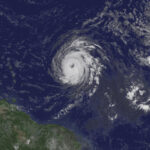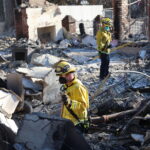Recently, three Washington construction contractors were fined by the state’s Department of Labor & Industries for safety violations after a crane boom made contact with high-voltage power lines at a construction site in Seattle. An estimated 14 kilovolts traveled down the crane’s hoist line to the men working below the power lines severely injuring two workers.
As a result of the incident, Marpac Construction, of Seattle, was cited for six workplace safety violations, including three “willful” violations and fined $133,500. A subcontractor, Spartan Concrete of Kirkland, faces five violations, including two “willful” violations and $90,000 in fines. Shaffer Crane & Equipment Inc., another subcontractor, was cited for three serious violations and one general violation with a total fine of $5,700.
According to a press release issued by the L&I, an investigation began last fall after news media reported on the incident.
L&I investigators at the site found that a mobile crane and a forklift with a crane-boom attachment had been operating under live high-voltage power lines. The power lines were scheduled to be moved underground, but rather than wait for that work to be done, the companies continued to work under them.
A Shaffer Crane employee was operating the crane and a Spartan foreman was giving signals when the incident happened. Seven workers on site at the time were at risk of electrical shock.
Willful, Serious and General Violations
The willful citations are for not ensuring that protective measures were in place and for not prohibiting work below energized power lines. Marpac was cited for an additional willful violation for not designating a qualified “lift director” who was aware of the voltages of the power line and the safety requirements for working around them. The investigation found that Marpac’s lift director was not aware of the voltages involved or the specific safety requirements.
Marpac was also cited for three serious violations related to inadequate training and for not ensuring an effective accident prevention plan, with penalties totaling $7,500.
The investigation found that Spartan’s employees were not trained or aware of the danger of working under power lines. Consequently, the concrete company was cited for two serious safety violations and fined $6,000 for not ensuring that employees clearly understood the hazards of overhead power lines and for lack of training and supervision.
Spartan was also cited for one general violation for not holding and documenting walk-around safety inspections at the beginning of the job and weekly.
A willful violation is one where L&I finds evidence of plain indifference or an intentional disregard to a hazard or rule. A serious violation is one where there is a substantial probability that worker death or serious physical harm could result from a hazardous condition.
As a result of the violations and the severity of the injuries, both Marpac Construction and Spartan Concrete have been identified as severe violators and are subject to follow-up inspections to determine if the conditions still exist.
Marpac and Shaffer have appealed the citation, and the appeals are pending. Penalty money paid in connection with a citation is placed in the workers’ compensation supplemental pension fund, helping workers and families of those who have died on the job.
Ways to Avoid Crane to Power Line Contact
According to the agency, the danger from a crane contacting overhead power lines is well-known. From 1999-2012, there were nine deaths in Washington due to crane contacts with power lines, including a double fatality in 2010.
According to the Electronic Library of Construction Occupational Safety & Health (ELCOSH), certain types of contractors are more likely to come into contact with power lines. These include:
- Roofers, siding and sheet metal contractors
- Tree trimming contractors
- Water, sewer, pipeline and communication contractors
- Painting contractors
A 2014 Hanover Insurance Group bulletin detailed those workers especially at risk during work near power lines. The insurer stated, “Among those especially at risk are workers handling taglines or crane loads, workers who are in contact with the crane, and operators who leave the crane cab.”
In 2012, L&I issued an alert to warn companies of the deadly hazard after receiving reports of six power line contacts by cranes over a six month period. The agency stated that companies operating cranes need to put protective measures in place to prevent crane booms from contacting energized power lines, designate a qualified “lift director” to ensure the safe operation of the crane and maintain a safe radius from power lines.
According to the Illinois-based American Society of Safety Engineers (ASSE), there are several ways companies can mitigate the risk when using a crane around power lines. These include the use of a dedicated spotter, a range of motion limiting device, insulating links and a range control warning device.
OSHA recommends that workers assume all power lines are energized until notification is provided by the power company and the lines are visibly grounded.
Was this article valuable?
Here are more articles you may enjoy.

 BYD’s Five-Minute Charges Turning Heads in EV Industry
BYD’s Five-Minute Charges Turning Heads in EV Industry  Tesla Showroom Strikes, Vandalism Sparked by Fury Against Musk
Tesla Showroom Strikes, Vandalism Sparked by Fury Against Musk  An Unusually Active Hurricane Season Is in Store for the Atlantic
An Unusually Active Hurricane Season Is in Store for the Atlantic  After the Flames: Preparing for the Growing Fraud Threat in Los Angeles
After the Flames: Preparing for the Growing Fraud Threat in Los Angeles 